
Intentionally spending time everyday in the outdoors can add amazing value to your day, to your mental health and to your life in general. Yet many people rush through their day without even a thought about it. When you invest time and energy into connecting with the outdoors and with nature each day, you stand to gain multiple health benefits including improved attention, reduced stress levels, improved sleep and a better mood. Spending even just a few minutes outside each day can start to make a difference.
Recently the Outdoors is my Therapy Facebook Group ran a 7 Day Challenge to share ideas about some of the ways we can all get connected with the outdoors on a more regular basis – so we feel better! And live better! All of these are completely do-able, perhaps with some modifications, no matter your fitness level, age, where you live or how mobile you are. Here are the 7 challenges we undertook to spend time everyday in the outdoors:
GO FOR A WALK
I’m referring here to simply walking around, moving your larger muscle groups and immersing yourself in your surroundings. Whilst daily exercise is very important, the act of getting your body in motion and connecting with the outdoors is the focus here. You can take a walk at various times during the day depending what works best for your routine.
Morning walk
Getting out into the natural sunlight first thing in the day helps your brain to wake up, re-sets your body clock so you’re ready for sleep again after dark, and forms a solid foundation for your day.
Lunch time walk
A mid-day walk helps to break up your day. Getting outside your usual workplace and changing your focus is one of the best stress breaks you can give yourself. Perhaps you’ll love it so much you’ll incorporate a daily constitutional into your regular workday routine.
End of the day walk
A stroll at the end of the day signifies the end of work and helps you transition to family time, personal time or relaxation time. Walking as the sun goes down is especially helpful to switch modes and settle for the evening.
WITNESS SUNRISE & SUNSET
Begin your day with the waking light of dawn and finish your work day as the sun sinks below the horizon – nature’s perfect bookends for your day! If you practise yoga, why not do some sun salutations as the sun rises or sets. Or use this special time for personal prayer, meditation or breathing or stillness practices. Sunrise and sunset are global phenomena which can help us feel connected with other people and places.
SPEND TIME IN A GARDEN
Are you fortunate enough to have your own outside yard? Or do you have pot plants, indoor plants or access to a local park or green space? Maybe you have an in-house kitchen garden with herbs or bean sprouts growing? Your daily garden routine could include weeding, pruning, watering, planting or harvesting. It could also include more physically demanding jobs such as fencing, making compost and nurturing your worm farm. If you don’t have your own garden, you can spend time planning your dream garden, creating a garden either in the earth, on your balcony or on your kitchen bench. Or you can use your senses to enjoy nature’s handiwork outdoors.
HAVE A GO AT BIRDWATCHING
Bring your attention to the bird life around you. What birds can you see? And hear? You might like to identify the various birds in your neighbourhood, or simply watch and listen to them. Over time you’ll notice their patterns and routines, flight paths, nesting sites, amusing behaviours, social groupings, and how they respond to seasonal changes.
PRACTISE MINDFUL PRACTICES
Mindfulness-based practices are wide and varied. In general the focus is on slowing down and bringing your attention to your surroundings and your experiences in the moment. This can be challenging because we spend so much of our lives rushing around.
Sensory mindfulness
One way to practise mindfulness in the outdoors is to observe the world around you through each of your senses one by one. Spend a couple of minutes noticing what you see, then move on to noticing what you hear, what you smell, what you feel, and so on.
Mindful walk
There are many variations of mindful walks too. You can be barefoot or wearing shoes. Begin by pausing for a few moments, close your eyes, take a few breaths and tune into how that feels in your body. Notice the sensations of the ground beneath your feet. Slowly open your eyes and draw your gaze to the ground slightly ahead of you. Move slowly forward one step at a time, bringing your attention to the sensations as you move your foot forward – lifting, moving, placing it down, and adjusting your balance. Repeat this for each step you take bringing your attention back to the sensations of walking each time your mind wanders. Continue for a few minutes, then when you are ready to finish, pause again, close your eyes, take a few breaths and then open your eyes. This is a wonderful moment for a gratitude practice.
FIND THE LITTLE TREASURES
Make new discoveries in your outdoor spaces every day. When you begin to look, you can find little treasures everywhere! Cobwebs hiding in the corners of the fence. Bugs scurrying in search of new homes. Grasses beginning to seed. Leaves swaying in the breeze. The soft sound of bird wings as they fly by. Grains of sand sparkling in the sunlight. The feel of the breeze as it moves your hair or caresses your skin. The smell of the eucalyptus tree.
CELEBRATE LIFE WITH A PICNIC
Picnics are the perfect way to celebrate life and the outdoors. They are equally delightful whether you go solo or share it with others. Picnics can be simple or complex, planned or spontaneous, romantic or practical. All you need is some food and somewhere suitable outdoors. You might like to have a picnic rug, chairs or a park bench to sit on, but finding a fallen log or rock is heaps of fun too.
Pre-preparing picnic food can be pretty special, however turning your ordinary everyday meal into a picnic outdoors is a fabulous way to liven up your day. If you like, you can bring some extra activities with you such as a camera to do some photography, bat and ball games, “I Spy” games, books and crosswords. Turn your picnic into an adventure by adding a physical challenge to it, for example hiking or biking into your picnic spot.

We had a lot of fun sharing these activities during our 7 Day Outdoor Challenge. Which ones would you like to incorporate into your routine for getting outdoors everyday? Or what other actions are you feeling inspired to take to get connected everyday in the outdoors?
Head over to our Facebook Group to view the videos and threads about our #7DayOutdoorChallenge and share your ideas with us. By the way (if you’re not already a member) when you request to join the Group you’ll be asked to answer some questions before you can join (so we know you’re not a robot!) and you need to agree to the rules which are there to keep the group as a safe space for sharing and inspiring.
You can also listen to this article in the Outdoors is my Therapy podcast!
Kathryn talks you through how you can incorporate a daily routine of spending time in the outdoors that works for you!
Discovering mountain biking as life’s ultimate parallel universe in her middle age, Kathryn Walton shares information and reflections in ‘Daisy Spoke’ that inform, inspire and empower women to a healthy and active lifestyle.


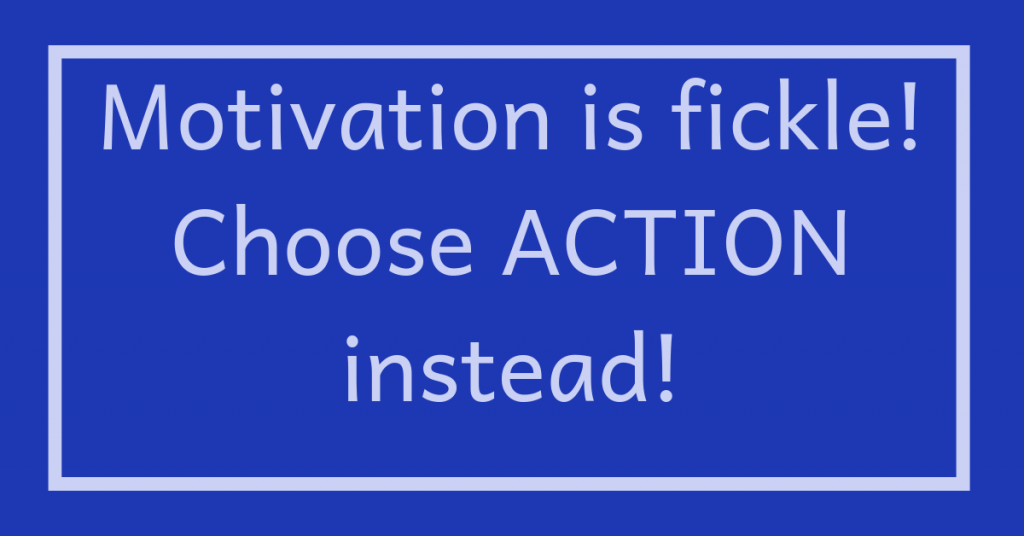
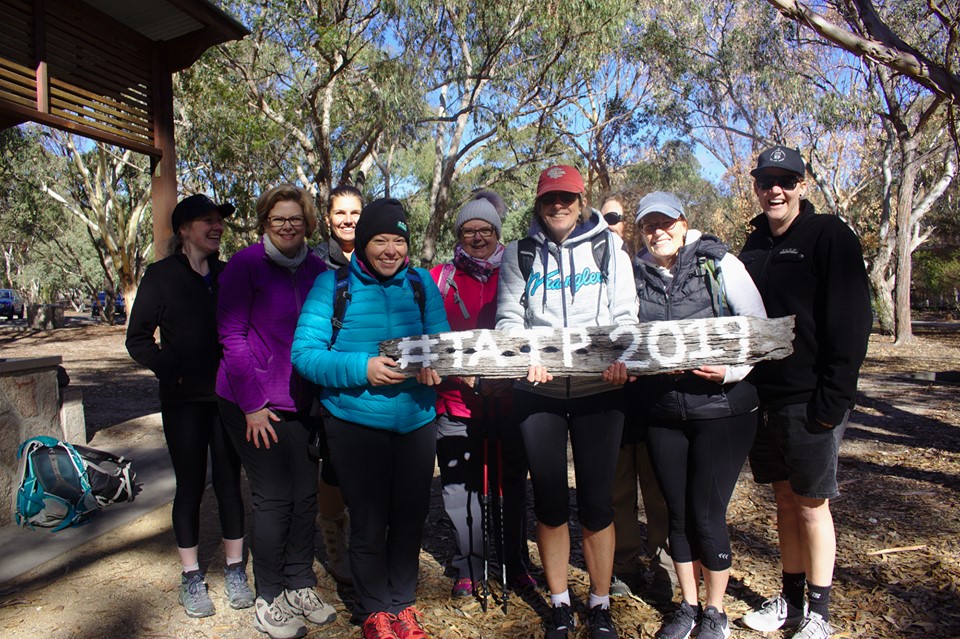

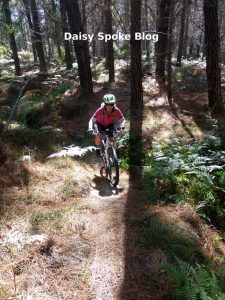 was missing it.
was missing it. 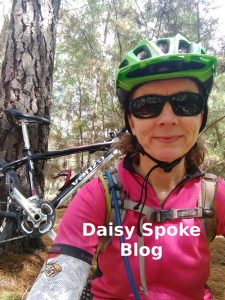 I’ve been practising and teaching this technique for a lot of years, and yet still I sometimes forget to do it when the moment arises. The thing is that on Sunday morning I DID NOTICE those fearful thoughts bouncing round my head. And guess what?
I’ve been practising and teaching this technique for a lot of years, and yet still I sometimes forget to do it when the moment arises. The thing is that on Sunday morning I DID NOTICE those fearful thoughts bouncing round my head. And guess what? 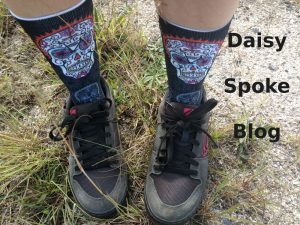 of short hills engaging my quads in an exertion that a couple of years ago would have been painful (if not impossible)! I pedalled in a higher gear than normal and found it easier than expected.
of short hills engaging my quads in an exertion that a couple of years ago would have been painful (if not impossible)! I pedalled in a higher gear than normal and found it easier than expected. 
 further afield to step into our beautiful Australian bush country! As I’ve traversed the trail over the past few months, I’ve sometimes stopped to look at the rock garden and visualise myself riding through the narrow gaps between the rocks without clunking my pedals. I knew that I would need to develop a lot more skill, line accuracy, confidence and power to ride this section. Basically I’d been riding it so slowly that I didn’t have enough power to get over the craggy rocks. Although I enjoyed my brief little fantasies of riding effortlessly over and around the rocks, I certainly didn’t have much hope that I’d ever actually be able to do it.
further afield to step into our beautiful Australian bush country! As I’ve traversed the trail over the past few months, I’ve sometimes stopped to look at the rock garden and visualise myself riding through the narrow gaps between the rocks without clunking my pedals. I knew that I would need to develop a lot more skill, line accuracy, confidence and power to ride this section. Basically I’d been riding it so slowly that I didn’t have enough power to get over the craggy rocks. Although I enjoyed my brief little fantasies of riding effortlessly over and around the rocks, I certainly didn’t have much hope that I’d ever actually be able to do it.  about something that was upsetting me. I wasn’t very mindful of where I was or what I was doing. Suddenly I realised I’d already ridden through the rock garden! I hadn’t dabbed my foot, I didn’t jab my pedals, and the smooth flowy feeling hit the pit of my stomach and came out of my mouth with a loud shriek, my previous upset forgotten in a moment of elation as I realised what I’d done. I’d accidentally got it right!
about something that was upsetting me. I wasn’t very mindful of where I was or what I was doing. Suddenly I realised I’d already ridden through the rock garden! I hadn’t dabbed my foot, I didn’t jab my pedals, and the smooth flowy feeling hit the pit of my stomach and came out of my mouth with a loud shriek, my previous upset forgotten in a moment of elation as I realised what I’d done. I’d accidentally got it right! Today as I walk the same trail and peer along the rock garden, I can clearly see the line that I need to take on my bike. The rocks seem so much smaller than before, the gaps between them seem so much wider, and I realise just how powerful the images and thoughts in our minds can be.
Today as I walk the same trail and peer along the rock garden, I can clearly see the line that I need to take on my bike. The rocks seem so much smaller than before, the gaps between them seem so much wider, and I realise just how powerful the images and thoughts in our minds can be. Kathryn Walton shares information and reflections in Daisy Spoke that connect, inspire and self-empower women to make healthy choices for themselves.
Kathryn Walton shares information and reflections in Daisy Spoke that connect, inspire and self-empower women to make healthy choices for themselves.


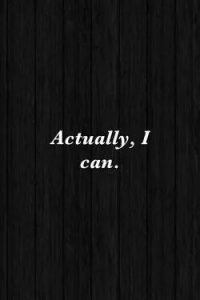 After much soul searching, I made the commitment to myself that I was going to conquer the fear that had irrationally built up in my mind. I really wanted to take charge of my fearful thoughts which seemed to be controlling my actions. It was as if my own thoughts were bullying me. The longer it went on, the worse it became. I knew that if I could get this sorted, I’d be able to transfer the skills and processes to other situations that make me nervous and better manage them as well.
After much soul searching, I made the commitment to myself that I was going to conquer the fear that had irrationally built up in my mind. I really wanted to take charge of my fearful thoughts which seemed to be controlling my actions. It was as if my own thoughts were bullying me. The longer it went on, the worse it became. I knew that if I could get this sorted, I’d be able to transfer the skills and processes to other situations that make me nervous and better manage them as well.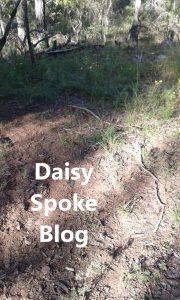
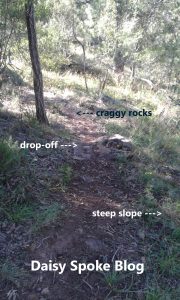


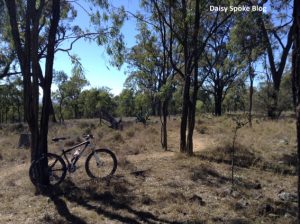 Fatigued from the heat of the day and the associated sleep disturbance through the night, I struggle to enjoy my mountain bike riding as usual. There’s a narrow time frame to get outside in order to avoid the oppressive heat. Yet even then it seems too hot, there are too many flies and mozzies, I still get heat rash all over (just like a baby, yes, including ….. well ….. including everywhere!) and there is the ever-present foreboding possibility of [GASP] snakes. Not just any snakes though. The snakes round this part of the world (Australia) are the deadliest on the planet, and in my little corner of the globe (Darling Downs, Queensland) they are more likely to be deadly than not!
Fatigued from the heat of the day and the associated sleep disturbance through the night, I struggle to enjoy my mountain bike riding as usual. There’s a narrow time frame to get outside in order to avoid the oppressive heat. Yet even then it seems too hot, there are too many flies and mozzies, I still get heat rash all over (just like a baby, yes, including ….. well ….. including everywhere!) and there is the ever-present foreboding possibility of [GASP] snakes. Not just any snakes though. The snakes round this part of the world (Australia) are the deadliest on the planet, and in my little corner of the globe (Darling Downs, Queensland) they are more likely to be deadly than not! Sitting down at home after a particularly hot day (it’s still over 30deg C at 7:30pm), I feel the faint breeze starting to work its magic, gently wafting through the windows, sharing its spirit and energy with me, re-energising and refreshing my body, mind and soul.
Sitting down at home after a particularly hot day (it’s still over 30deg C at 7:30pm), I feel the faint breeze starting to work its magic, gently wafting through the windows, sharing its spirit and energy with me, re-energising and refreshing my body, mind and soul. 
